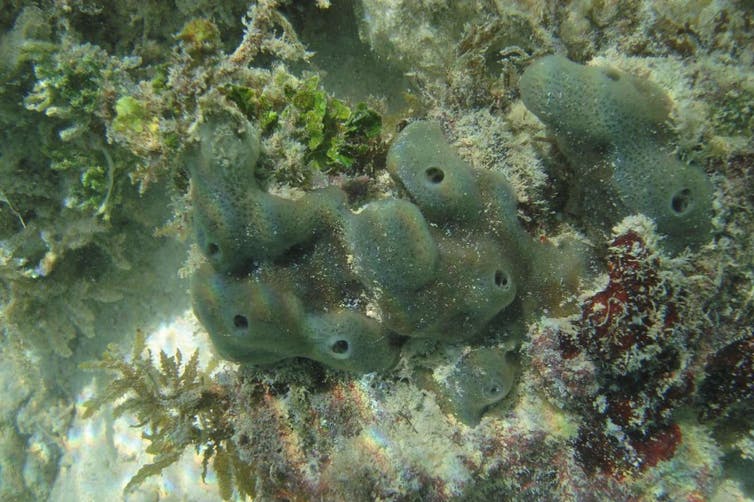Emily S Wong, UNSW.
Many human traits, such as height and disease susceptibility, depend on genes that are encoded in our DNA. These genes are switched on and off and further fine-tuned by important but hard-to-find regions in the genome.
A particularly important class of these regions are known as enhancers, which boost the likelihood that a particular gene will be activated. Trying to find enhancers based on the genome sequence alone is incredibly difficult, like finding a light switch in a dark room.
That’s why, until now, there has not been a single example of a DNA sequence enhancer that has been found to be similar right across the animal kingdom.
In a new study published in Science, we found that humans, mice, zebrafish — and most likely the entire animal kingdom — share enhancer regions with a sea sponge that comes from the Great Barrier Reef.
Because sea sponges and humans last shared a common ancestor more than 700 million years ago, this means the functional mechanism has been preserved across all this time.

What we did
Our study involved a team of researchers from the Victor Chang Cardiac Research Institute, The University of Queensland, The Centenary Institute, and Monash University. We started by collecting sea sponge samples from the Great Barrier Reef, near Heron Island.
At the University of Queensland, we extracted enhancer DNA from the sea sponge and injected it into a single cell from a zebrafish embryo. We found that while the sea sponge enhancer sequences were very different from zebrafish enhancer sequences, they still worked: they successfully and consistently drove the expression of a fluorescent protein in certain types of zebrafish cells.
Read more: Animals in research: zebrafish
Based on computational predictions, we also identified and tested similar enhancers from humans and mice, to show that these sequences drive the expression of a fluorescent protein in similar zebrafish cell types during development.
We discovered that despite differences between the genetic sequences of sponges and humans due to millions of years of evolution, we could identify a similar set of genomic instructions that controls gene expression in both organisms.
What this means
Our findings represent a fundamental discovery in understanding the connection between our genomes and our physical traits.
The sections of DNA that are responsible for controlling gene expression are notoriously difficult to find, study and understand. Even though they make up a significant part of the human genome, researchers are only beginning to understand this genetic “dark matter”.
The work is helping us learn to “read” and understand the human genome, which is amazingly complex. Knowing more about how our genes operate will also help us understand what goes wrong in disease. An improved understanding of the genome will also help us understand how animals evolve.
Read more: Living with complexity: evolution, ecology, viruses and climate change
Emily S Wong, Head of Regulatory Systems, Victor Chang Cardiac Research Institute and Senior research fellow, UNSW
This article is republished from The Conversation under a Creative Commons license. Read the original article.
